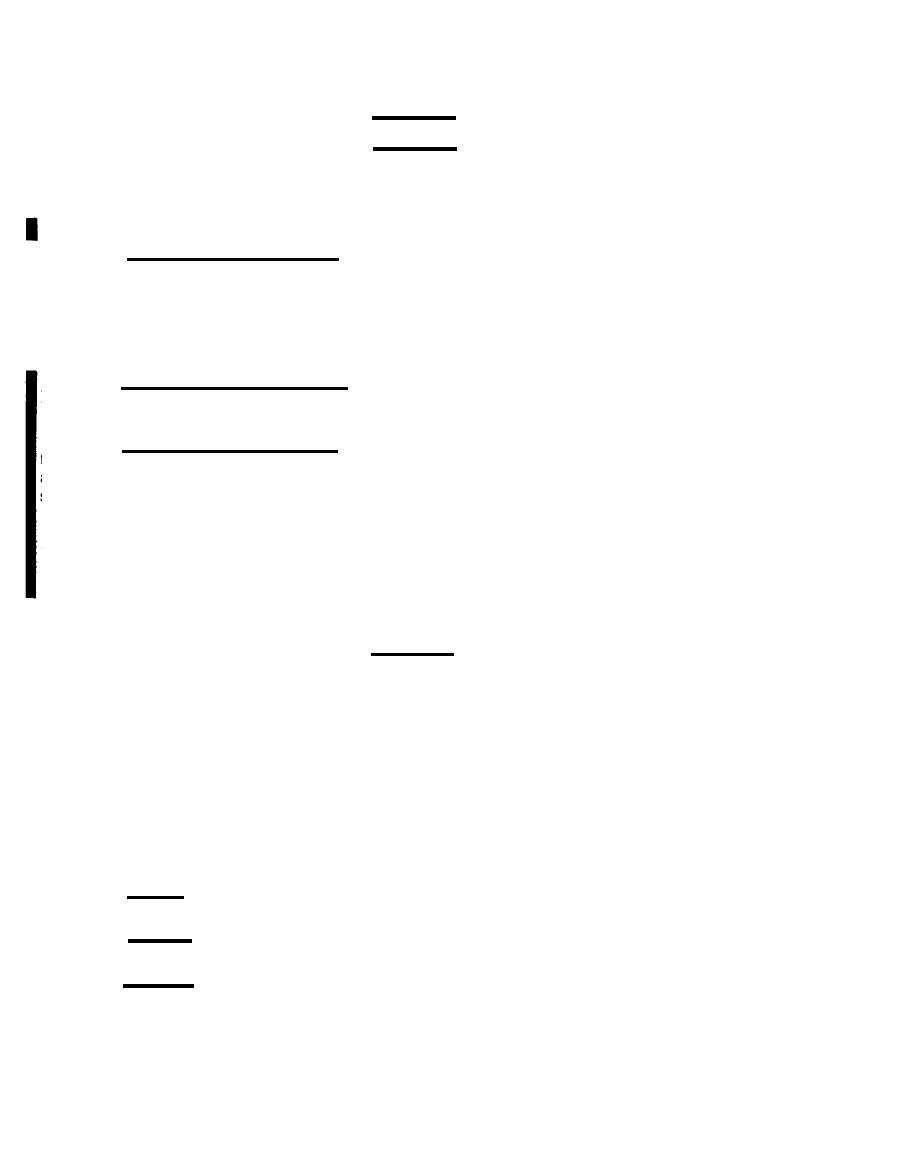 |
|||
|
|
|||
|
|
|||
| ||||||||||
|
|
 TM 9-2320-209-10-2/TO36A12-1B-1091-2
WARNING
Dry cleaning solvent, Type II, Fed. Spec P-D-680, is
potentially dangerous to personnel and property. Do not use
near open flame or excessive heat. Flash point of solvent is
139 F (59.4 C).
b . Bolts, Nuts, and Screws. Check them all for obvious looseness, missing,
b e n t , or broken condition. You can't try them all with a tool, of course, but look
for chipped paint, bare metal, or rust around bolt heads. If you find one you think
is loose, tighten it, or report it to Organizational Maintenance.
c . W e l d s . Look for loose or chipped paint, rust, or gaps where parts are
w e l d e d together. If you find a bad weld, report it to Organizational Maintenance.
d. Electric Wires and Connectors. Look for cracked or broken insulation, bare wires, and
loose or broken connectors. Check for loose connectors and make sure the wires are in good shape.
Report loose connectors and bad wires to organizational maintenance.
e. Hydraulic Lines and Fittings. Look for wear, damage, leaks, and make sure clamps and
fittings are tight. Wet spots show leaks, of course, but a stain around a fitting or connector can mean
a leak. If a leak comes from a loose fitting or connector, report it to Organizational Maintenance. If
something is broken or worn out, report it to Organizational Maintenance.
FLUID LEAKAGE. It is necessary for you to know how fluid leakage affects the status of
the fuel, lubricating, coolant and hydraulic systems. The following are definitions of the types/classes
of leakage you need to know to be able to determine the status of your vehicle. Learn, then be
familiar with them and REMEMBER -- WHEN IN DOUBT, NOTIFY YOUR SUPERVISOR!
CAUTION
Equipment operation is allowable with minor
l e a k a g e s (Class I or II). Of course, con-
sideration must be given to the fluid capacity
i n the item/system being checked/inspected.
When in doubt, notify your supervisor
When operating with Class I or II leaks, con-
tinue to check fluid levels as required in your
PMCS.
Class III leaks should be reported to your
supervisor or to Organizational Maintenance.
Class I. Seepage of fluid (as indicated by wetness or discoloration)
a.
not great enough to form drops.
b.
Class II. Leakage of fluid great enough to form drops but not enough
to cause drops to drip from item being checked/inspected.
c. Class III. Leakage of fluid great enough to form drops that fall from
the item being checked /inspected.
Change 1
|
|
Privacy Statement - Press Release - Copyright Information. - Contact Us |